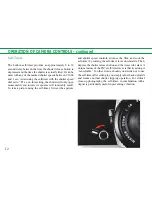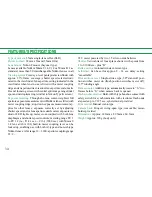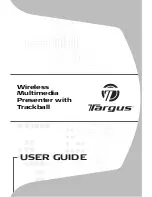
24
EXPOSURE MEASUREMENT - continued
Exposure Control
The amount of light reaching the film plane is determined by
a combination of the shutter speed and the lens aperture. Since
the two are interrelated, different combinations will give the
same degree of exposure. A 1-step change in shutter speed,
or a 1-stop change in aperture setting, will either halve or
double the degree of exposure. For example, a shutter speed
of 1/125 sec. lets in twice as much light as a setting of 1/250
sec., and only half as much light at a speed of 1/60 sec.; for
an aperture setting of f/11, twice as much light as f/16, and
half as much as f/8, is let in. Thus, if the correct exposure for
a particular picture-taking situation is 1/125 at f/11, then 1/
60 at f/16 or 1/250 at f/8 will be equally acceptable. The
following table illustrates the interrelationship between shut-
ter speed and aperture we have just described.
The “best” combination will depend on the results you want.
Use fast shutter speeds to “freeze” motion; use slow speeds
to produce a deliberate blur. Also, small apertures give greater
depth of field, while large apertures restrict sharp focus to
the main subject. Make your choice accordingly.
Metering Range
If the central exposure indicator LED (lo) fails to light up,
even after all possible lens aperture and shutter speed combi-
nations have been tried, then the available light is either too
bright or too dim for the meter’s range. In this case, you can
either use artificial light (such as an electronic flash unit) to
increase subject illumination or mount a neutral density filter
on the lens to decrease the amount of light reaching the film.
Remember, too, that the lens in use is an equally important
factor to consider. For example, a 50mm f/1.4 lens (with ASA
100 film) couples from EV 1 (f/1.4 at 1 sec.) to EV 18 (f/16 at
1/1000 sec.), making it suitable for low-lightlevel picture-tak-
ing situations; on the other hand, a 135mm f/2.8 lens proves
more suitable for bright-light shooting, coupling (with ASA
100 film) from EV 3 (f/2.8 at 1 sec.) to EV 20 (f/32 at 1/
1000). Thus, choose the lens carefully to match the existing
lighting conditions.
Shutter speed
(second)
Aperture
1/1000
1/500
1/250
1/25
1/60
f/4
f/5.6
f/8
f/11
f/16












































